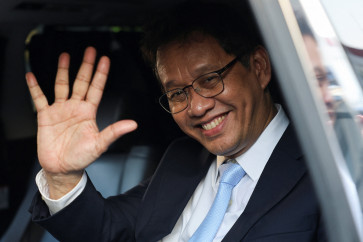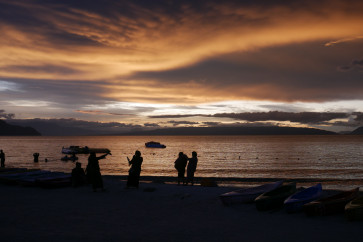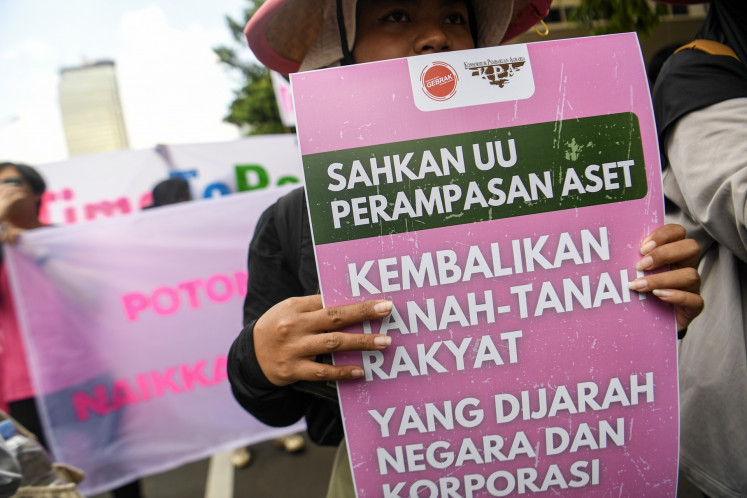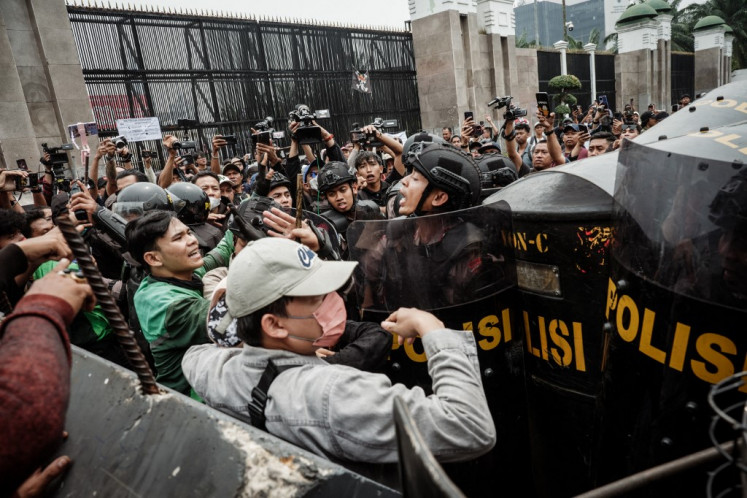Popular Reads
Top Results
Can't find what you're looking for?
View all search resultsPopular Reads
Top Results
Can't find what you're looking for?
View all search resultsReligion in the press? More improvements needed
It is perhaps over the top to assume that most journalists are irreligious (let alone atheists), but one cannot overlook the impression that newsmen everywhere — in Asia or in Europe — are ignorant of religions
Change text size
Gift Premium Articles
to Anyone
I
t is perhaps over the top to assume that most journalists are irreligious (let alone atheists), but one cannot overlook the impression that newsmen everywhere — in Asia or in Europe — are ignorant of religions.
Only recently has religion been taken seriously by the media. Trained to be skeptical and always inquisitive, journalists are traditionally more challenged to write political and business stories that are, in a way, more factual.
If they do cover religion, as believed by the authors of Blind Spot: When Journalists Don’t Get Religion, they usually focus on its political aspects or tend see it from a political point of view.
And despite scientists’ and philosophers’ conjecture that it may gradually vanish as society becomes more mature and rational, religion remains an integral part of many people’s lives.
In Indonesia and Malaysia, for example, religion is a very sensitive issue that many believe is often used by politicians to achieve their goals. From the issue of the headscarf to the names of God, people take their beliefs very seriously.
Due to their apparent lack of expertise, the media have long been accused of being complicit in perpetuating prejudices against certain religious groups, and even fomenting faith-based conflicts, particularly after the Sept. 11, 2001 terrorist attacks in New York when xenophobia is believed to have become more pervasive.
But should the media take all the blame for the lack of comprehensive and emphatic coverage of religion?
A group of 15 young journalists, including one from The Jakarta Post, and religious leaders who took part in the eighth ASEF Journalists’ Colloquium in Madrid on April 5 and 6 highlighted the lack of media literacy among religious leaders as one of the reasons why the media often got religion wrong in their coverage.
While calling on news organizations “to build their own knowledge on religion, recognizing it as a specialized area of coverage that requires the same depth and attentiveness they traditionally give to politics and business,” the colloquium also stressed the need for religious leaders to improve their knowledge of how the media works and better represent themselves.
It said the “Internet is an important platform for religious groups and interfaith projects to present themselves to journalists and the wider public.”
“Religious leaders should use this opportunity to provide clear and user-friendly information about their groups. Younger, tech-savvy members of religious groups have a special contribution to make here.”
New media is seen as a powerful tool that can challenge mainstream media in shaping public opinion. It has also changed the way the media works, with many journalists becoming more exposed to internet-based research.
The colloquium, which began in 2005, was organized by the Asia Europe Foundation (ASEF) and Casa Asia, and with support from the Jakarta-based Paramadina University. It aims to push the media to help ease interfaith conflicts.
“A key to the successful collaboration in promoting inter-communal dialogue is to learn from each other, share new perspectives and fresh insights,” ASEF executive director ambassador Dominique Girard said.
The colloquium called on media organizations to provide national and regional awards for excellence, to improve and set standards in the coverage of religion-related issues.
“Media professionals should also be more creative and use more journalistic repertoire to cover religious issues, such as human-interest stories, features, opinion columns or interviews,” it said in its recommendation.
“The guidance on how to cover religion is essential and should be included in professional codes of ethics,” it said.
The participants in the colloquium — from countries including Ireland, Cambodia, Hong Kong, France, Spain, Slovakia, Pakistan, the Netherlands, the Czech Republic, Malaysia, Thailand, Germany and Singapore — acknowledged that neither the media nor religious leaders had done enough to “provide a balanced and holistic picture of various religions to the broader public.”
One obstacle preventing them from doing so is the fact that some governments are “overly restrictive in their management of public discussion of religion”, the colloquium concluded. Pakistan and Malaysia were examples of this.
The other issue is that the dominant social norms and values in some populations are often “intolerant of difference, including of minorities within religious communities”. With persecutions of religious minorities such as the Ahmadiyah group prevailing, Indonesia is among countries facing this challenge.
Sectarianism: In this file photo, a group of people called the Alliance of Muslims in West Java held a rally in Bandung demanding the government ban the Ahmadiyah sect which has been deemed heretical by the Indonesian Ulema Council. Religious minorities in the country have often suffered discrimination from the mainstream groups. The media is seen to have an indispensable role in easing religious conflicts. JP/Yuli Tri Suwarni










